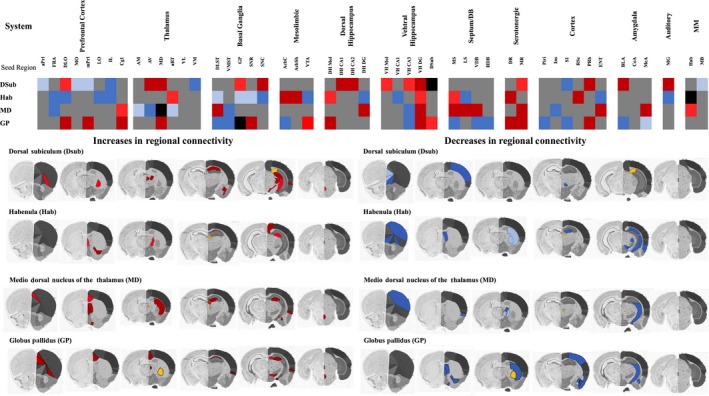Figure 5.

Chronic, intermittent WIN 55,212 treatment alters functional connectivity in neural circuits underpinning recognition memory. Panel (a) | Heatmap showing how chronic, intermittent treatment with WIN 55,212‐2‐induced modifications in the functional connectivity of ‘seed’ brain regions (DSub, MD, Hab and GP). Dark red denotes significantly gained connectivity, whereas light red represents significantly increased connectivity. Dark blue represents significantly lost connectivity, whereas light blue denotes significantly decreased connectivity. Significant gains, losses, increases and decreases in connectivity were determined by statistical comparison of the VIP statistic (unpaired Student's t‐test with Bonferroni post hoc correction) determined PSLR, with significance level set at p < 0.05. Full data for each ‘seed’ region are shown in the Tables S3–S6. Panel (b) | Brain images showing the anatomical localization of brain regions with significant increased/gained connectivity to the ‘seed’ regions (DSub, Hab, MD and GP). Yellow represents the anatomical localization of the ‘seed’ brain region. Brain section figures are modified from the Allen mouse brain atlas (mouse.brain‐map.org/static/atlas).
